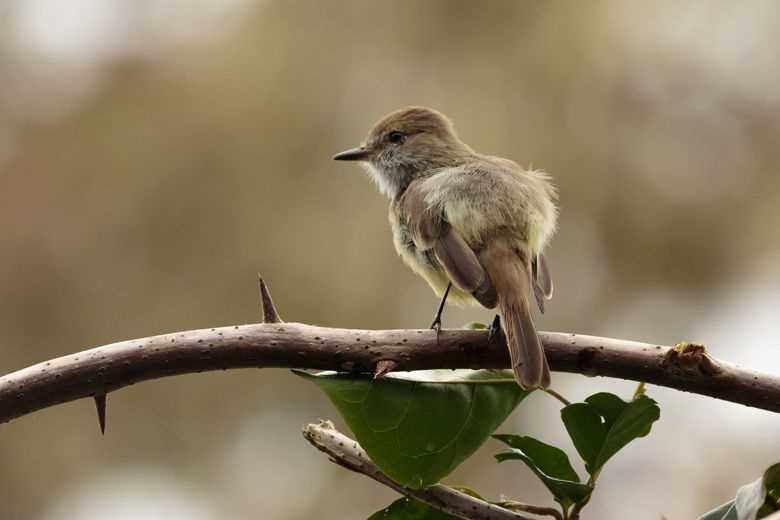We woke up to a calm bay off the coast of Santa Cruz Island. Soon after breakfast, we had a dry landing and then a bus ride towards the highlands of Santa Cruz in search of giant tortoises in their natural habitat.
Along our way we stopped to enjoy the view of two pit craters on each side of the road. These features formed after the collapse of the magma chamber. A large forest of the endemic scalesia trees was seen around this area. The milky forest, or scalesia forest, is home to several species of finches, some mockingbirds, and yellow warblers.
Soon after our arrival to a private farm known as Manzanillo, we encountered several giant tortoises roaming around the area. Some cooled off in rainwater ponds, others ate the native and introduced species of grasses. The highlands have been the natural habitat for these giant tortoises for over millennia, but today they have learned to coexist with farm animals such cattle and and some introduced species of plants.
Along our hike through the woods, we encountered small tree finches, one woodpecker finch, and a couple of very curious Galapagos flycatchers. The highlands are located among the humid zone, much greener than the coastline where we have been exploring on previous days.
After our visit to the highlands, we returned to National Geographic Endeavour ll to navigate towards Borrero Bay, a beautiful white sand beach where some of us enjoyed beach time and did stretching sessions, while others went snorkeling along the rocky reefs. A couple of the very rare lava gulls were seen along the shore, as well as Sally Lightfoot crabs and some white-cheeked pintail ducks flying.
Santa Cruz is definitely one of the jewels in the crown. It not only holds a large population of giant tortoises, and has impressive geology, but also has some outstanding beaches for us enjoy swim and snorkel surrounded by unique marine species.







